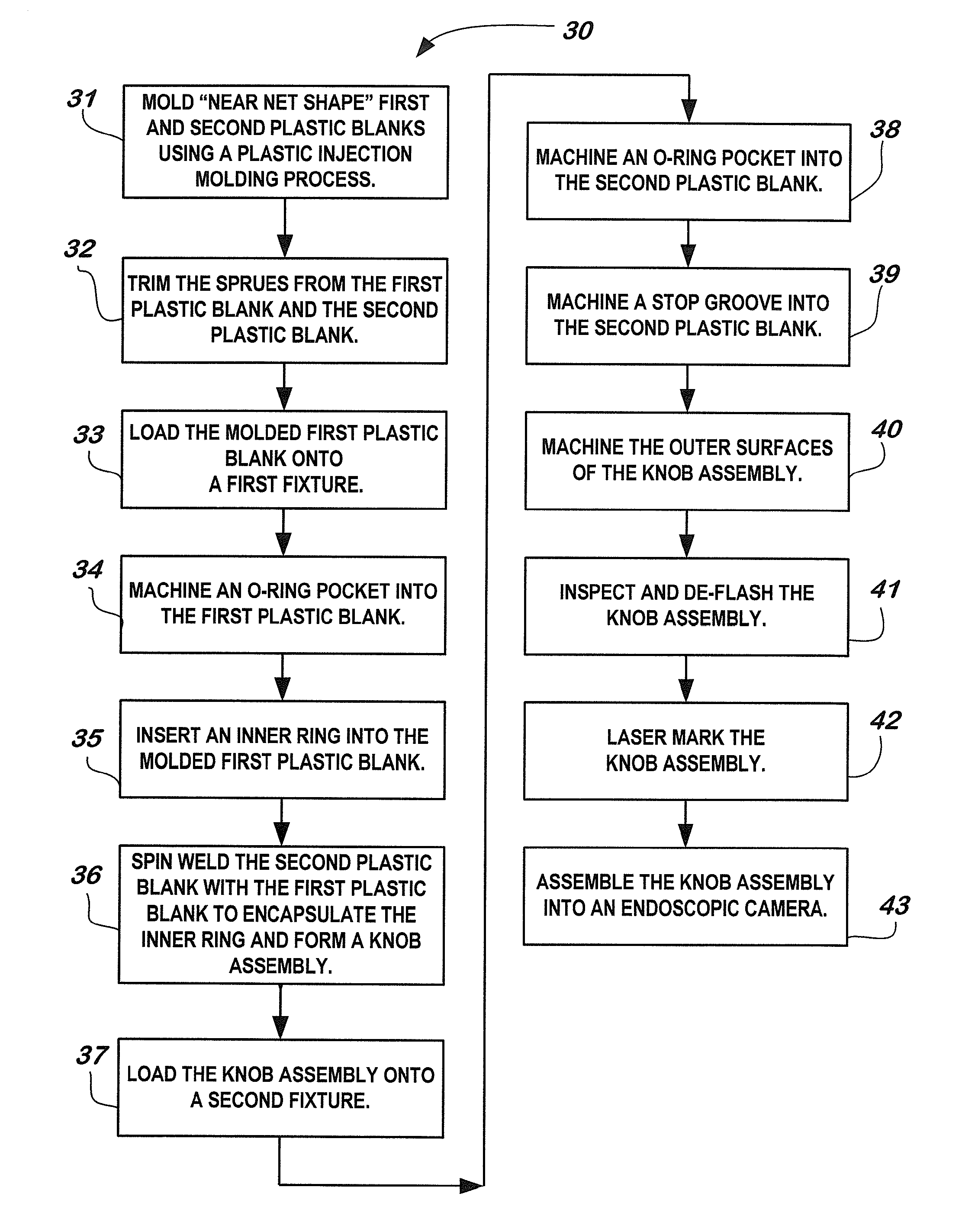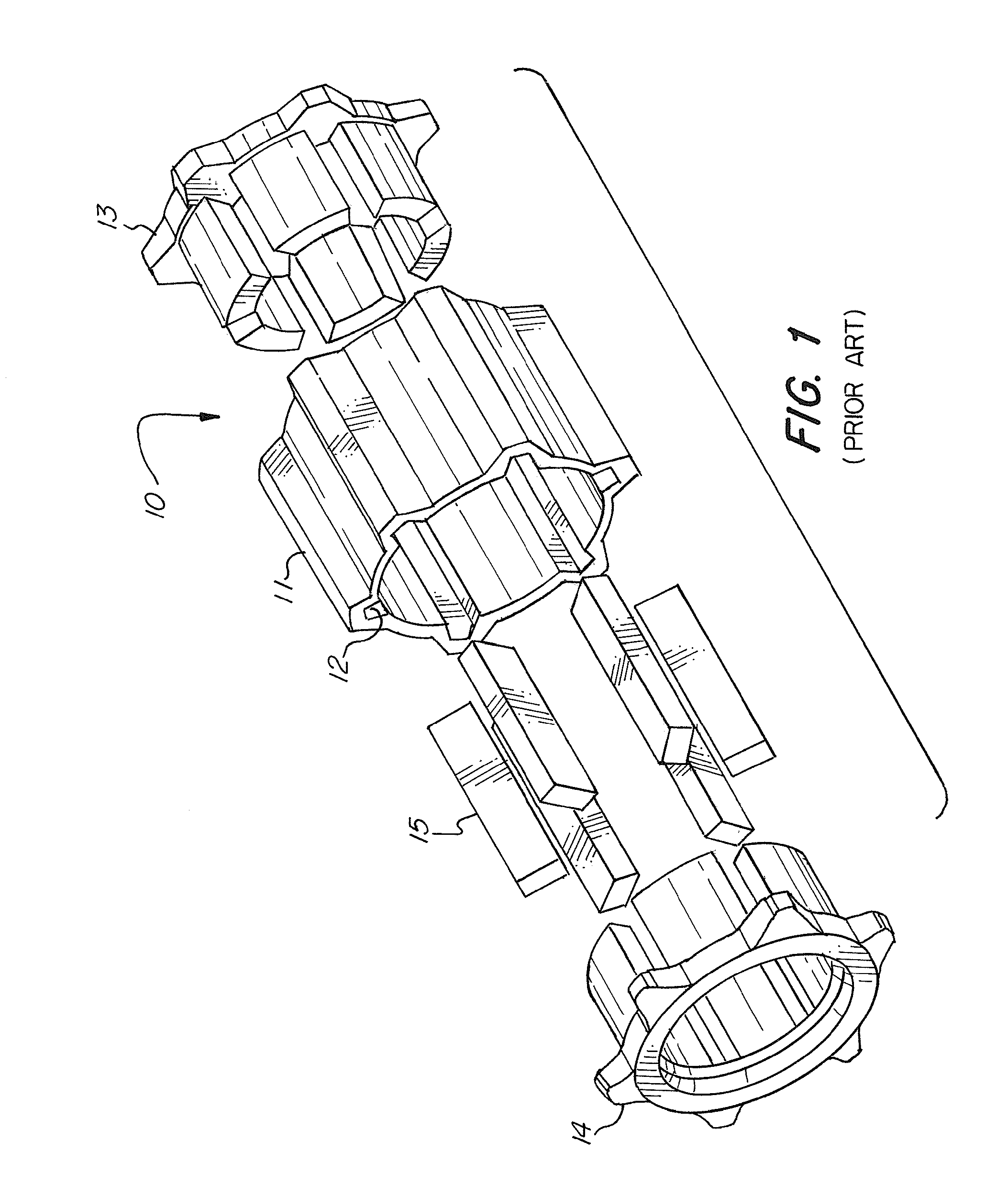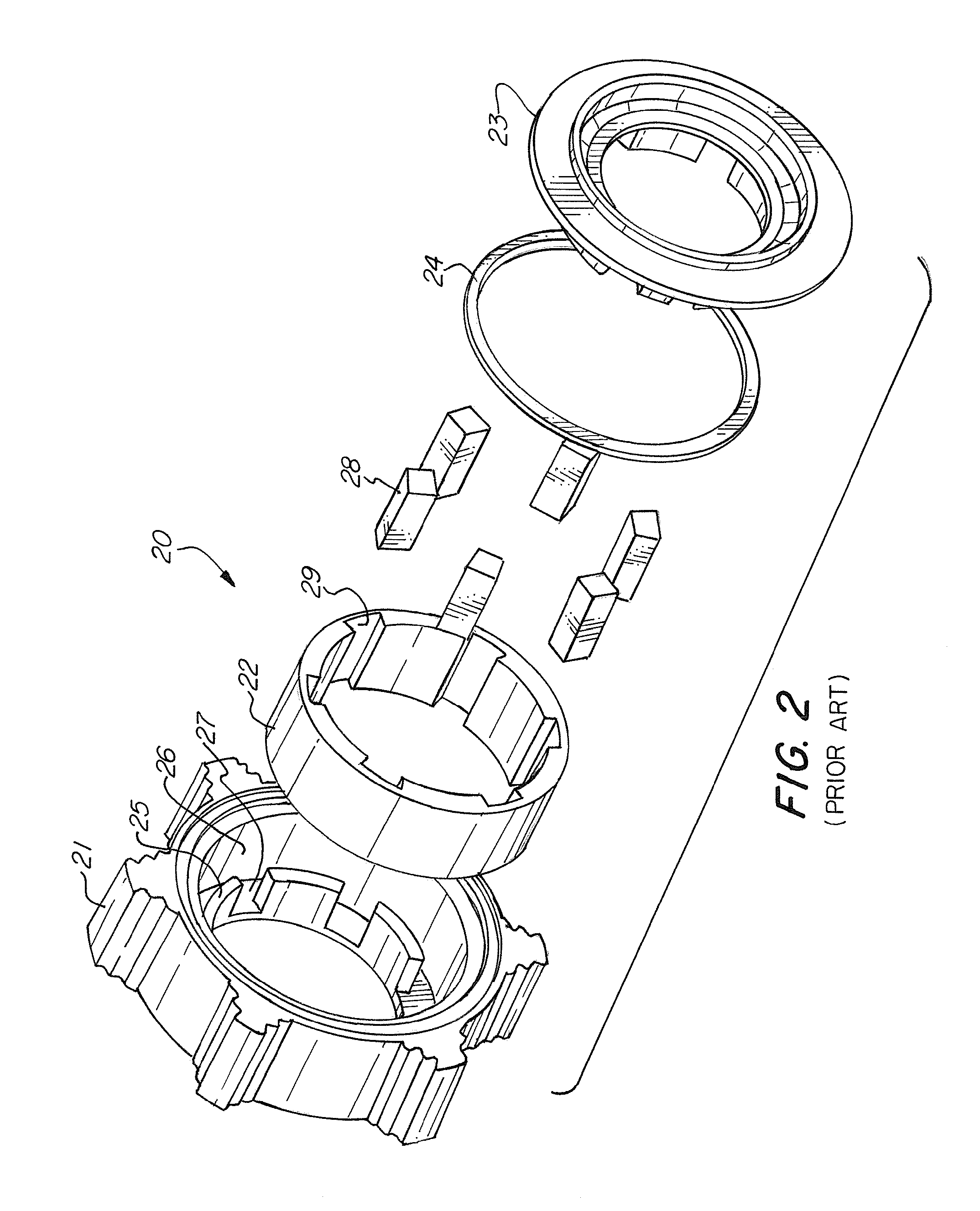Polymeric Material For Use In And With Sterilizable Medical Devices
a technology of polymeric materials and medical devices, applied in the direction of mechanical control devices, instruments, applications, etc., can solve the problems of high tooling costs, high manufacturing costs in terms of the cost and amount of metal used, high tooling costs, etc., and achieve the effect of reducing or eliminating the occurrence of undesirable molding characteristics
- Summary
- Abstract
- Description
- Claims
- Application Information
AI Technical Summary
Benefits of technology
Problems solved by technology
Method used
Image
Examples
Embodiment Construction
[0030]The present invention provides a method of manufacturing an endoscopic video camera having one or more external adjuster assemblies, such as a zoom knob assembly or a focus knob assembly.
[0031]FIG. 3. illustrates various steps of the manufacturing method 30 in accordance with the first embodiment of the present invention. Manufacturing method 30 utilizes a near net machining concept. Under this concept, a plastic or metal blank, which includes all molding features (e.g. gating system, sprue) is first molded by a plastic injection molding (IM) process or a metal injection molding (MIM) process to a “near net shape” of the final component such that minimal secondary machining is required to meet the specification of, for example, a final component such as a plastic zoom knob or a metallic inner ring for an endoscopic video camera.
[0032]The term “IM process” refers to the process which uses plastic material, a hollow mold, and an injection molding machine to manufacture plastic c...
PUM
| Property | Measurement | Unit |
|---|---|---|
| vertical displacement | aaaaa | aaaaa |
| diameter | aaaaa | aaaaa |
| temperature | aaaaa | aaaaa |
Abstract
Description
Claims
Application Information
 Login to View More
Login to View More - R&D
- Intellectual Property
- Life Sciences
- Materials
- Tech Scout
- Unparalleled Data Quality
- Higher Quality Content
- 60% Fewer Hallucinations
Browse by: Latest US Patents, China's latest patents, Technical Efficacy Thesaurus, Application Domain, Technology Topic, Popular Technical Reports.
© 2025 PatSnap. All rights reserved.Legal|Privacy policy|Modern Slavery Act Transparency Statement|Sitemap|About US| Contact US: help@patsnap.com



